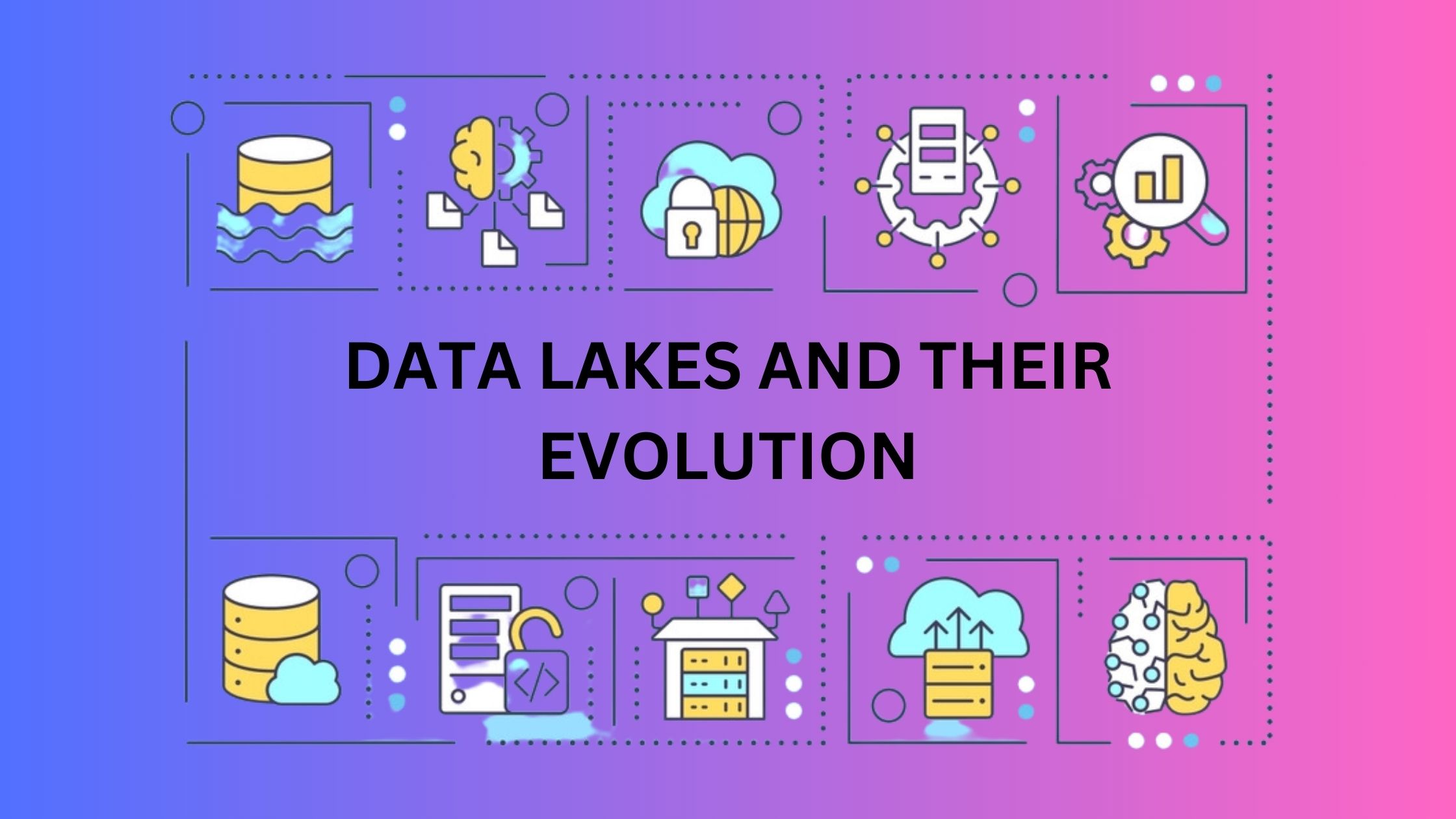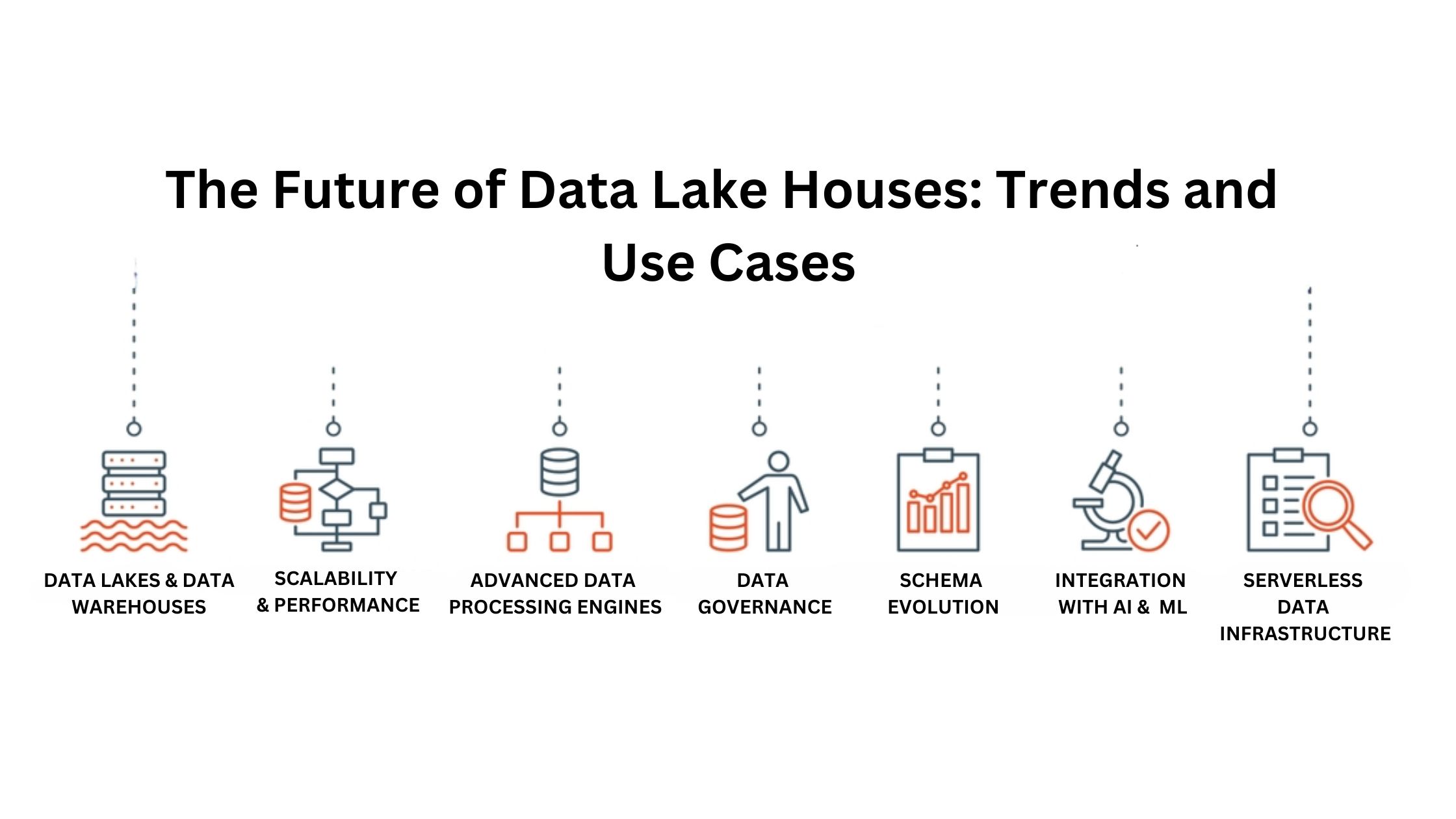
Introduction
In the continually changing realm of data management, the idea of data lakes has been around for a long time. But what’s next on the horizon?
Enter the data lakehouse—a powerful fusion of data warehousing and data lakes that promises to revolutionize the way we handle and analyze data. With a staggering 2.5 quintillion bytes of data generated daily, the need for more efficient data solutions has never been more urgent.
In this blog, we embark on a journey to explore the future of Data Lakehouses and the Future of Data Lakes and dive deep into the transformative potential of data lakehouses. Get ready to unlock the secrets of data management in the digital age!
Understanding Data Lakes and Their Evolution
Data Lakes, essential in the age of big data, are vast repositories storing structured and unstructured data. They’ve evolved significantly, and the emergence of the Databricks Lakehouse Platform, a key player, has transformed their landscape. Traditionally, data lakes stored raw data, but now they’ve integrated with advanced analytics and AI tools, enhancing their utility.
The Databricks Lakehouse Platform takes this a step further by enabling real-time data processing, advanced analytics, and machine learning in one unified environment. This evolution bridges the gap between data lakes and data warehouses, providing a seamless experience for data management and analysis. Organizations leveraging this technology are gaining unprecedented insights, leading to smarter decision-making and innovative solutions.

Introducing Data Lakehouses: A Paradigm Shift
The advent of Data Lakehouses marks a transformative moment in the realm of data management and analytics. With Databricks Solutions at the forefront, organizations are empowered to harness the full potential of their data. This revolutionary paradigm seamlessly merges the best aspects of data lakes and data warehouses, bridging the gap between storage and analytics.
Databricks Solutions play a pivotal role by providing a unified platform for data engineering, data science, and analytics, ensuring that data is not just stored, but also easily accessible and insightful. This holistic approach revolutionizes how businesses handle and derive value from their data, promising increased agility, efficiency, and data-driven decision-making.
The Future of Data Lake Houses: Trends and Use Cases
- Convergence of Data Warehouses and Data Lakes:
Data lakehouses will continue to evolve, merging the best aspects of data warehouses and data lakes. This convergence will result in a unified platform for storing, processing, and analyzing structured and unstructured data.
- Scalability and Performance:
Future data lakehouses will emphasize scalability and performance, making it easier to handle massive volumes of data while ensuring rapid query response times. This will be crucial as organizations deal with increasing data complexity.

- Advanced Data Processing Engines:
Data lakehouses will incorporate more advanced data processing engines, such as Apache Spark and Presto, to facilitate real-time and batch processing. This will enable complex analytics and machine learning tasks within the same platform.
- Data Governance and Security:
Enhanced data governance and security will be at the forefront of data lakehouse development. Features like fine-grained access controls, encryption, and compliance management will be critical to maintaining data integrity and privacy.
- Schema Evolution and Management:
Data lakehouses will offer improved tools and mechanisms for managing evolving data schemas. This will allow organizations to adapt to changing data requirements without compromising data quality or consistency.
- Native Data Lakehouse Services:
Cloud providers will offer specialized native data lake house services, making it easier for organizations to set up and manage their data lake houses in a cloud-native environment, taking advantage of auto-scaling and cost optimization features.
- Integration with AI and ML:
The future of data lakehouses will see tighter integration with AI and machine learning frameworks. This will empower organizations to perform advanced analytics, predictive modeling, and automation directly on their data, driving more informed decision-making.
- Serverless Data Infrastructure:
The future of data lakehouses will embrace serverless architectures, eliminating the complexities of managing infrastructure. Serverless environments will enable seamless scalability, allowing organizations to focus on data analysis and innovation rather than infrastructure maintenance.
Data Lake Houses: Pioneering the Next Era of Data Management
In the constantly changing realm of data management, a clear trend has emerged: the future of data lakes is incredibly promising, especially with the emergence of data lakehouses. As we explore this groundbreaking technology, it’s evident that data lakehouses are not merely a trendy phrase; they represent a significant shift in the landscape, signaling a transformative game-changer.
As we’ve explored the idea of data lakehouses, it’s evident how they overcome the constraints of conventional data warehouses and data lakes by integrating the strengths of both approaches. By seamlessly integrating data storage and processing, they offer businesses a solid groundwork to fully leverage the potential of their data.
So, as we conclude this exploration into the future of data lakes and the promise of data lakehouses, remember this: the data-driven future is within your reach. Seize the opportunity to transform your data into actionable insights and make your mark in the digital age. Embrace the data lakehouse revolution, and watch your business thrive like never before.
The future of data is now, and it’s more exciting than ever.